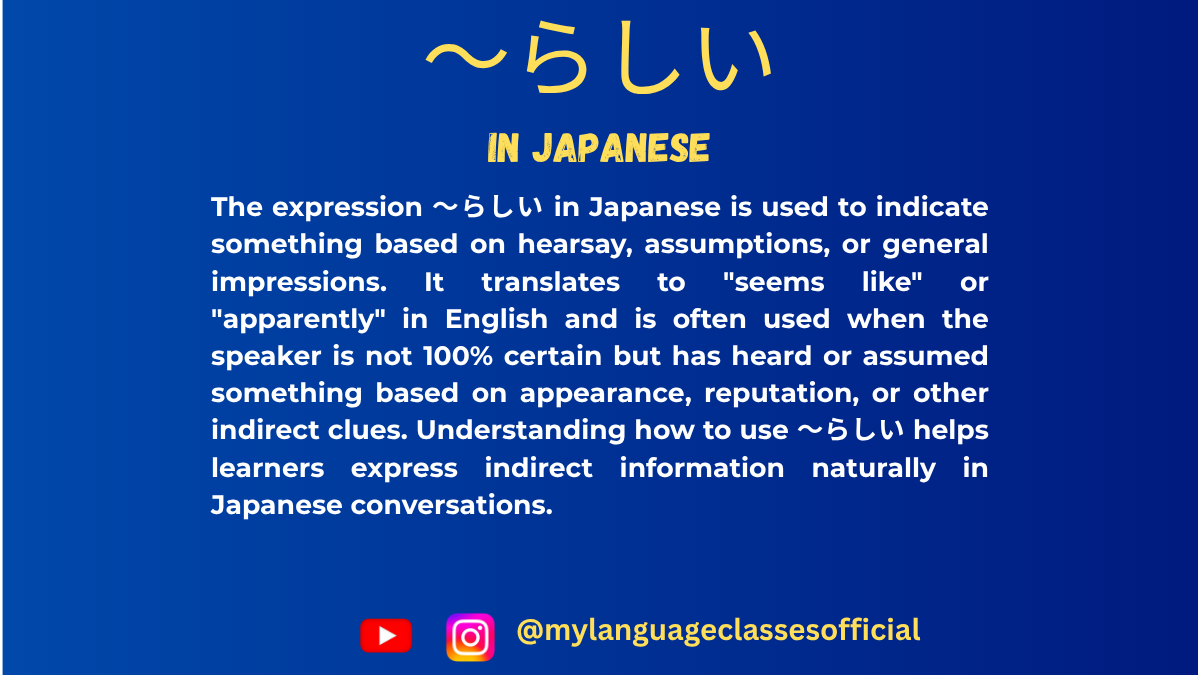Your cart is currently empty!
Tag: rashii grammar point B1 level

Understanding 〜らしい in Japanese
Understanding 〜らしい in Japanese
When learning Japanese, one of the essential expressions to understand is 〜らしい. This suffix plays a vital role in expressing assumptions, hearsay, characteristics, and appropriateness. In this blog post, we will explore all possible usages … Read more

